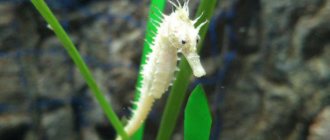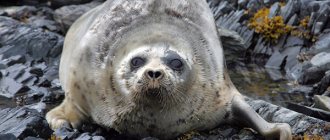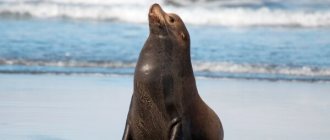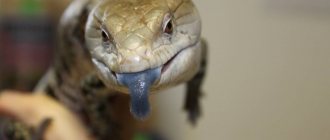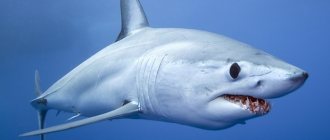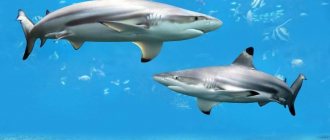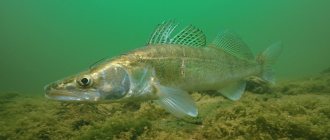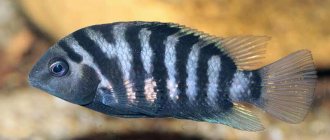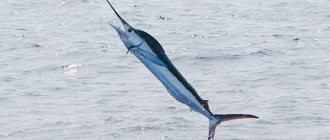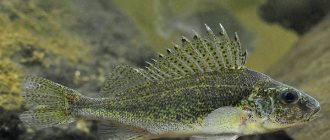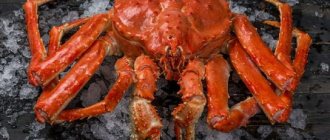Sea worms are unusual creatures. Many of them look like fantastic flowers or bright flat ribbons, and there are species that evoke a shiver of horror with their appearance and habits. In general, the sea worm is a very interesting creature. It can be spiny-headed, polychaete, ringed, flat, hairy, and so on. The list is actually huge. In this article we will take a closer look at several types.
Polychaete tube worm
The sea worm, the photo of which looks like an exotic flower, is called a tubular polychaete or “Christmas tree.” This bright species belongs to the Sabellidae family. The Latin name of the animal is Spirobranchus giganteus, and the English name is Christmas tree worm.
This species of sea worm lives in the tropical zone of the Indian and Pacific Oceans. Preference is given to shallow depths, coral thickets and clean water.
To feel protected, this sea worm builds a calcareous tube of calcium and carbonate ions. The animal extracts its building material directly from the water. To bind ions, the “Christmas tree” secretes a special organic component from two oral glands. As the worm grows, the tube has to be added by attaching new rings to the end of the old shelter.
The larvae of polychaete tubeworms are responsible when choosing a place for a house. They begin construction only on dead or weak corals. Sometimes they gather in entire colonies, but single houses are also found quite often. As the corals grow, they hide the tube, leaving only an elegant multi-colored “herringbone” on the surface. By the way, the color of the sea worm is really bright and rich. It comes in blue, yellow, red, white, pink, mottled and even black. There are a lot of options. Non-fast individuals combine different colors.
A beautiful external “Christmas tree” is not just a decoration, but gill rays that perform the work of the feeding and respiratory organs. Each sea worm has two spirals of gill rays.
Polychaete annelids take care of their safety at the stage of building a house. The lime tube has a tight lid; at the slightest threat, the worm instantly pulls in and slams the entrance shut.
Depending on the species, Spirobranchus giganteus live from 4 to 8 years.
Pseudoceros dimidiatus
You can see these flat sea worms while diving in Bali. They are absolutely safe for humans and have nothing to do with the hated worms. Velvety black with white, yellow or light green stripes, the worms are more reminiscent of sea butterflies, not swimming, but fluttering across the ocean. The orange stripe framing the body of the oceanic inhabitant serves as its protection from natural enemies.
Polychaetes
Polychaetes belong to a type of annelids, the class Polychaetes. More than 10 thousand species live in nature. Most live in the seas and lead a bottom-dwelling lifestyle. Some families (for example, Tomopteridae) live in the perialium (open sea or ocean that does not touch the bottom). Several genera live in fresh waters, such as Lake Baikal.
Spirobranchus Giganteus
Yes, yes, you didn’t think so - Spirobranchus Giganteus is not a plant, but a living creature. It is often called the “Christmas Tree Worm” - and, admittedly, it really looks like a forest beauty.
They live in almost all tropical seas of the World Ocean. It is very common to see people using these worms to decorate their aquariums. Spirobranchus Giganteus look stunning thanks to their colorful tentacles.
Marine sandstone
One of the most common representatives of polychaetes is the ringed polychaete marine worm, whose name is the marine sandworm. In Latin it sounds like Arenicola marina. The animal is quite large, its length reaches 20 cm. This sea worm lives in arched burrows dug in the bottom sand. The food for this species is bottom sediment, which the worm passes through the intestines.
The body of an adult individual consists of three sections - thorax, abdomen and caudal. The outer integument forms secondary rings that do not correspond to segmentation. There are 11 abdominal segments in the body of the worm, and each contains paired bushy gills.
The sea sandbite strengthens the walls of its home with mucus. The length of the burrow is about 30 cm. While in the house, the worm places the front end of its body in the horizontal section of the burrow, and the rear end in the vertical section. A funnel forms on the ground above the head end of the worm as it constantly swallows bottom sediments. To defecate, the sandworm exposes its rear end from the burrow. At this moment, the sea worm can become prey for a predator.
Natural enemies of sandworms
Photo: Sandworm
Under natural conditions, worms have a fairly large number of enemies.
Enemies of the Sandbug in the wild:
- some species of birds, most often seagulls, or other types of seabirds;
- echinoderms;
- crustaceans;
- some shellfish;
- a huge number of small and medium-sized fish species (cod, navaga).
A large number of fish love to eat worms. They select the moment when the next portion of sand appears at the bottom in the form of a crater and instantly snatches the worm. However, this is not so easy to do. With the help of tenacious bristles, it is firmly attached to the walls of its tunnel. In extreme cases, worms are capable of throwing off part of their body. In addition to fish, birds and crustaceans hunt for worms in shallow waters or on the coast. They are of great value for fishing enthusiasts.
People hunt for worms not only as bait for successful fishing. Recently, scientists have discovered that its body contains a substance that has a pronounced antimicrobial effect. In this regard, today it is the object of numerous studies and attempts to use it in pharmacology and cosmetic medicine.
Nereid
Nereid is a marine annelid. This is a crawling species that serves as food for many marine fish. The body of the worm consists of segments. At the front point there is a head, on which there are tentacles, a mouth, jaws and two pairs of eyes. The sides of the segments are equipped with flat processes similar to blades. Numerous long bristles are concentrated here.
In the Nereid, the entire surface of the body is involved in breathing. Ringed earthworms, which are familiar to everyone, breathe in the same way. The Nereid moves, quickly moving its blade-like outgrowths. At the same time, the body rests on the bottom with tufts of bristles. This marine annelid's menu includes algae and small animals that it grabs with its jaws.
Lanceolate fluke
Although the lancet fluke looks harmless, it is a very dangerous creature. It is a parasitic flatworm that infects livestock.
The strangest ability of the lanceolate fluke is the ability to control the behavior of ants. They enter the ants' brains and deprive them of the instinct to return home. The poor ants get lost and remain on the blades of grass until they become someone's breakfast.
It was included in our selection not because it looks very attractive - but such a small creature with such destructive power deserves special attention.
Breathing Features
The breathing method used by the Nereids can be considered an exception to the rule for this type of worm. How do other representatives of ringed animals breathe? What do the breathing of marine annelids have in common? Respiration of most species occurs through gills, which are located on blade-shaped outgrowths. The gills are equipped with a large number of capillaries. The enrichment of blood with oxygen comes from air, which is dissolved in water. This is where carbon dioxide is released into the water.
Sabellastarte cf. sanctijosephi
We're willing to bet you couldn't imagine worms even looking like this. It is indeed very difficult to remember the scientific name of this beautiful creature - that is why in everyday life it is called “Blueberry”.
These creatures resemble the bright feathers of tropical birds. The color depends on the area in which the Blueberry worms live. The “residence” of these worms are tubes of sand and mucus, which Sabellastarte cf. sanctijosephi build themselves.
Marine flatworms
Another class of worms is found in the ocean depths - marine flatworms. They are called ciliated or turbellarians. More than 3.5 thousand species are included in this class. The body of representatives is covered with ciliated epithelium, which helps to move. Some representatives of ciliated worms can only be seen under a microscope, but there are species that reach 40 cm in length. Among flatworms there are not only free-living marine species, but also parasitic ones, including tapeworms.
The marine flatworm is most often a predator. He moves by crawling or swimming. It is a bilaterally symmetrical animal. Turbellaria have a flattened body of oval or elongated shape. The sensory organs are located on the front of the body, and the mouth is on the ventral side.
The digestive tract of eyelash worms varies by species. It can be completely primitive or quite complex, with a branched intestine.
Some species of marine turbellaria are discreet and inconspicuous, but there are bright multi-colored beauties that are simply impossible not to notice.
The character and lifestyle of Nereis
Nereis can live in burrows on the seabed, but more often the worms simply bury themselves in the mud. Often, while walking and searching for food, they swim above the surface of the bottom. They can be called homebodies because they do not move long distances before the breeding season.
Recently, scientists discovered a rather unusual feature of Nereis, unusual for worms. They communicate with each other in a language only they understand. This happens with the help of chemicals that they release into the environment.
They are produced by skin glands located on the body of polychaetes. These substances are pheromones. They have different purposes: some attract females, others scare away enemies, and others serve as a warning of danger to other worms.
Their Nereis are read using sensitive organs that are located on the head. If they are removed, this will lead to the death of the worm. He will not be able to find food for himself and will easily become prey to the enemy.
Several species of Nereis behave like spiders when hunting. They weave nets from special mucous threads. With the help of which they catch sea crustaceans. By moving, the net lets its owner know that it has caught prey.
Planarians
Despite the fact that planaria look quite interesting, they most often end up as uninvited guests in aquariums. It is very difficult to notice them, since they are predominantly nocturnal and hide in the ground during the day. Planaria feed on shrimp eggs, and also often attack mature specimens, crawling into the gills and causing suffocation. After the death of the shrimp, planarians calmly eat their prey. These are very tenacious creatures - even if you cut a planaria into ten parts, after a while each will turn into a full-fledged worm.
4.Methods of hooking
Method 1. Before the fishing process, up to 10 individuals need to be placed on the needle, and the sting of the needle should be left free, which is inserted into the cavity of the needle and slowly moved over the head of the worm onto the hook. The tip of the point should protrude from the tail of the bait. This method of baiting is used when catching fish that can swallow a hook.
Method 2 - “Danish” . Take a thin brass tube (you can buy it at any fishing store). One end of it becomes sharp and a worm is pulled onto it. The tip (sting) of the hook is inserted from the opposite side of the tube, the fishing line is pulled, and the sand core from the tube through the hook is moved onto the fishing line so that the point (sting) comes out of the tail part.
How to properly tie a hook to a fishing line so that the bait does not slip is described here https://seatackles.blogspot.com.by/2011/11/blog-post_19.html
Hermodice Carunculata
Hermodice Carunculata are polychaete worms that live in warm seas. They are predators.
They have a long orange body covered in white bristles that make them look like a simplified version of dragons. Their bristles are saturated with poison - these cute creatures are incredibly dangerous. Many tourists want to hold this unusual creature in their arms, and immediately pay for such a rash desire. If you dare to touch Hermodice Carunculata, you will most likely get a severe burn. It is because of the painful sensations after tactile contact with Hermodice Carunculata that they are popularly nicknamed “fire worms.”
5.What kind of fish can be caught with a worm in the Mediterranean Sea
It is a universal bait, suitable for many types of fish:
- cod;
- flounder;
- conger eel;
- laskir (saragus);
- mullet (the worm itself and its deposits);
- mullet;
- Denis;
- barkan;
- aras;
- smarida;
- mullet;
- sole.
Large fish species are caught on several sand baits. Part of the bait should be free.
